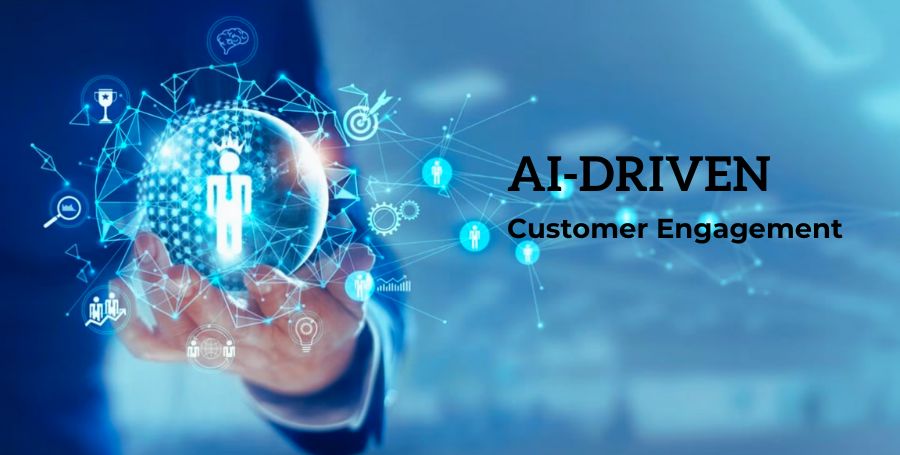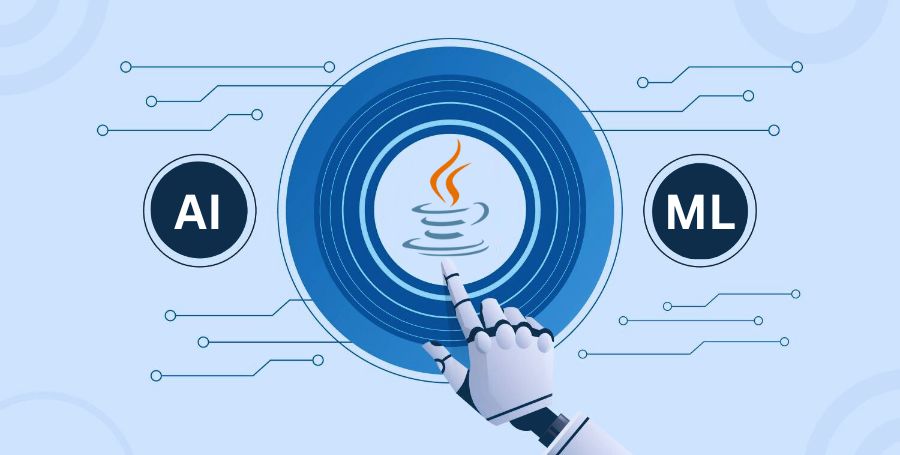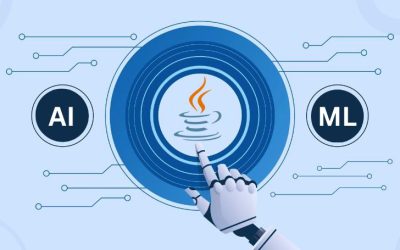In today’s business world, data is the compass guiding strategic decisions. To stay competitive and generate new ideas, one must be able to comprehend data and apply a vast amount of information. In an information-driven world, strategically utilizing data is crucial to preserving a competitive advantage and promoting ongoing development and innovation.
Data warehouses help organize and store a lot of data in an organized way. This makes it easier for companies to find significant patterns and insights. Essentially, data warehouses help businesses make smart decisions by keeping their data in a well-structured and accessible place.
In this blog, we’ll talk about how adding AI to data warehousing can do some really cool things. It turns these warehouses into systems that can analyze, predict, and optimize. Get ready to see how AI and data warehousing collaborate for awesome insights and growth!
What is a data warehouse? They organize and store vast amounts of data so that it is easy to find and use. The architecture, or how it is put, has many parts cooperating to ensure that data is accessed quickly and efficiently.
Challenges in Traditional Data Management and Analysis
Handling large amounts of data, the traditional way is difficult. When handling lots of data, it is clumsy and slow. It takes time to extract meaningful insights from it. These difficulties hinder decision-making and make it difficult for companies to remain competitive in today’s fast-paced world. That’s why understanding the fundamentals of data warehousing is necessary. They do this by arranging the data in a way that makes sense.
Their configuration facilitates rapid data retrieval and storage. Businesses gain an advantage in the cutthroat business world by using this to analyze data more quickly and make better decisions. Thus, understanding data warehouse operations becomes crucial for companies dealing with these typical data issues.
AI’s Development in Data Warehousing
The journey of AI merging with data warehousing marks a fascinating evolution. Initially, data warehouses stored information for later use. With the integration of AI, this role transformed dramatically. As data evolved into a dynamic force within the warehouse, AI began to integrate beyond simple storage.
In the early stages, AI’s role was often limited to basic automation tasks, simplifying certain processes. As technology advanced, machine learning, a subset of AI, took center stage. This shift allowed data warehouses not just to store information but also to learn from it. Machine learning algorithms enabled warehouses to recognize patterns, predict trends, and generate insights autonomously.
Today, AI in data warehousing is at the forefront of innovation. Advanced algorithms power predictive analytics, uncovering hidden correlations in vast datasets. The evolution continues with AI becoming more adept at understanding complex data structures, providing businesses with not just a storage solution but an intelligent assistant in understanding the complexities of their information landscape. This ongoing integration promises a future where data warehouses are not static archives but living, learning entities, continually enhancing their capabilities to meet the evolving needs of businesses in an increasingly data-driven world.
In the field of data warehousing, the combination of machine learning and data analytics has created a potent synergy. Data analytics has historically involved drawing conclusions from past data. Data warehouses now have the capacity to forecast future trends in addition to analyzing historical data thanks to the incorporation of machine learning. These warehouses’ data powers ML algorithms, which allow for a proactive approach by spotting patterns and forecasting outcomes that lead to better-informed decision-making.
Impact of AI on Data Warehousing in Real Life
Imagine a big retail store using AI in its data warehouse to predict what customers might like. This helps them better manage stock, suggest individual preferences, and improve the complete shopping experience.
In banking, AI detects unusual transactions in data warehouses, preventing fraud. AI protects banks and makes the financial system safer and more reliable.
These examples show how versatile and powerful AI is in data warehousing. When machine learning and data analytics work together, businesses don’t just organize data better; they also get predictions and make better decisions. How businesses use data is changing and moving from merely looking back to actively using it to grow and succeed.
Advantages of AI in Data Warehousing
Improving Data Quality and Accuracy
AI plays a vital role in elevating the quality and accuracy of data within warehouses. Traditionally, ensuring data accuracy was a manual and time-consuming process. With AI, algorithms can automatically identify and correct errors, inconsistencies, and outliers in vast datasets. This not only reduces the risk of inaccuracies but also enhances the overall reliability of the stored information. Data warehouses can improve their data quality over time by continuously learning and adapting through machine learning.
Enhanced Speed of Data Processing
One of the significant benefits of integrating AI into data warehousing services is the significant increase in data processing speed. Traditional methods of handling large datasets often lead to delays in retrieving and analyzing information. AI algorithms, on the other hand, enable swift data processing, allowing businesses to access insights in real-time. This accelerated speed enhances the agility of decision-making processes, empowering organizations to respond promptly to changing market dynamics and make informed choices based on the most up-to-date information.
Role of Predictive Analytics in Informed Decision-Making
Predictive analytics fueled by AI, emerges as a key player in enabling informed decision-making in data warehousing. Predicting future trends and outcomes can be done by machine learning algorithms based on historical data patterns. This foresight empowers businesses to make strategic decisions with a higher probability of success. For example, in retail, predictive analytics can forecast customer demand, enabling optimized inventory management. This proactive approach to decision-making, based on AI-driven predictive insights, positions businesses to stay ahead in the competitive landscape by anticipating and adapting to market trends.
AI Strategies for Business Growth
AI in Relating Market Trends
AI proves inestimable in decoding and prognosticating request trends. AI algorithms can identify patterns and emerging request trends by analyzing large datasets. Businesses using AI gain a competitive edge by staying ahead of the wind, conforming strategies to align with evolving request dynamics, and making informed opinions predicated on real-time perceptivity.
Predictive Analytics for Effective Demand Soothsaying
Predictive analytics, a foundation of AI, revolutionizes demand soothsaying. AI algorithms can read unborn demand with remarkable delicacy by analyzing literal data and comparing patterns. This empowers businesses to optimize force, manage coffers efficiently, and meet client demands proactively. The capability to provision request requirements positions companies strategically, ensuring they’re well-prepared to fulfill demand, minimize redundant stock, and enhance overall functional effectiveness.
Individualized Perceptivity Enhancing Client Experience
AI-driven substantiated perceptivity reviews the client experience. AI algorithms can offer customized recommendations, elevations, and content. This position of personalization enhances client engagement, satisfaction, and fidelity. Businesses exercising AI in this way produce a more individualized and responsive client trip, fostering stronger connections with their followership. Ultimately, integrating AI strategies accelerates business growth through optimized operations and enhances the overall client experience by contributing to continued success in a competitive business.
Common Challenges in AI Integration
Enforcing AI in data warehousing comes with common challenges. These include integrating AI seamlessly, icing comity with being systems and prostrating resistance to change. Icing that AI algorithms align with business objects and deliver meaningful perceptivity can also pose difficulties.
Strategies to Overcome Obstacles
Strategic approaches can help businesses navigate these challenges. This involves investing in comprehensive training programs to familiarize brigades with AI technologies, fostering a culture of rigidity. Uniting nearly with IT professionals and data scientists ensures a smooth integration process. Phased executions and airman programs allow associations to test and upgrade AI operations before full-scale deployment.
Significance of Data Security
Amid the AI revolution, prioritizing data security and sequestration is consummated. Businesses must apply robust security measures to cover sensitive information. This includes encryption, access controls, and regular checkups. Emphasizing the ethical use of AI and ensuring compliance with data protection regulations builds trust with guests and stakeholders, buttressing the integrity of the data warehousing ecosystem. By addressing these challenges courteously, businesses can harness the full eventuality of AI in data warehousing while securing the confidentiality and sequestration of their data.
Crucial Considerations for Successful AI Integration
Successful AI integration hinges on several crucial considerations. Align the AI enterprise with the business model to ensure applicability. Engage in thorough data medication, icing the quality and pertinence of input data. Also, give comprehensive training for druggies and foster a culture that embraces AI technologies. Regularly assess and modernize AI models to keep them current and effective.
Easing collaboration between data scientists and business stakeholders is pivotal. Establish clear communication channels to ground the gap between specialized and business perspectives. AI enterprises align with business objectives and restore data-driven perceptiveness into practical strategies. By leveraging the moxie of data scientists with the strategic vision of critical stakeholders, by fostering harmonious collaboration, businesses can unleash the full phenomenon of AI.
The transformative power of AI in data warehousing is inarguable. From perfecting data delicacy to enabling prophetic analytics, AI elevates these depositories from unresistant libraries to dynamic machines of strategic sapience and invention. The strategic integration of AI enhances functional effectiveness and places associations in the vanguard of invention, enabling them to adapt to a rapidly evolving business geography.
As we move forward, the future of business growth strategies lies in employing data-driven perceptivity. Embracing AI in data warehousing propels businesses into a period where informed opinions pave the way for enduring success and competitiveness.







